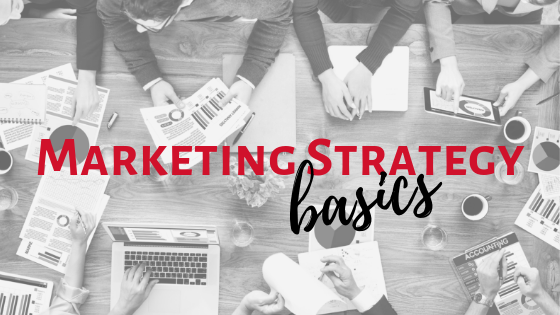Marketing strategy is one of those HUGE topics that cannot be fully covered in one (or even a series of posts). However, we will touch on some basic ideas you need to know to help craft a successful marketing strategy for your organization: Audience, Competition, and Metrics.
Audience:
Who is your target audience? Who is your ideal customer? What is their gender, age, geography? Are they a cat person? Are they a dog person? Do they have kids? No kids? Do they like to travel, or not travel? These things will you help you ensure that you know WHO your audience is so you can speak to them.
Once you know WHO your ideal client (audience) is, you will know WHERE to find them. Are they on Facebook? Are they on Snap? Are they Instagram, Twitter or Quora? Do they read magazines? Do they read newspapers? Billboards? TV? Streaming?
Last, and this is the most important, WHAT problem does your organization solve for your target audience? Bearing in the mind that the problem that your organization solves, for your ideal audience, can be vastly different than the problem that you solve for other clients that you have.
For example, one of our clients is in a very targeted niche. We know who their audience is. We know where their audience is. And, we know the exact three problems that our customer solves for their audience. Thus, we can ensure that every message that goes out to their audience is targeted to ensure their audience feels that we are talking directly to them. When you can do that, your message is far more likely to be well received by your audience.
Competition:
We all have competition. So, take a moment and think about your top three or four competitors. Everybody has competitors, and that is good. Because when you know WHO your competitors are, you can hone in on your organization’s competitive advantage.
Conversely, what is your competition doing better? Or, doing differently? For example, we have a client who is in a particular publication niche. It’s pretty much them and one other competitor, covering the whole country. The principal competitive advantage that our customer has: They are personal. Their clients know that they can call, email, Facebook, Voxer, or use a Slack channel. However it is best for that customer to get in touch with our customer, they’ve got it. Whereas their competition automates everything. Please note, this is not saying that our customer doesn’t automate, however, everything they do is personal. So, even their automations feel personalized.
So when we put together their messaging, we purposefully use words like, “We partner with you.” “We are your team.” That personal touch, and year after year they are continuing to grow and capture greater market share! By knowing who your audience is, where they are, what problem you solve, and how you are different than your competitors, you can blow your marketing and your messaging out of the water!
Metrics:
Metrics Matter. That is our mantra, and we are sticking to it. Thus, what is your offer to your first-time customers? Again, bearing in mind that your offer to your first-time, ideal, customers might be very different than your offering to other first-time customers. Knowing what your ideal customer is going to take advantage of, what’s going to draw them in your literal or figurative door, is what you need to make sure that you’re putting out there.
Next, what is the lifetime value of a new customer? Or, what are you willing to pay to acquire a new customer? Each business is different. Each organization is different. And if you know your lifetime value of a customer, that will help you make sure you are putting an offer out there that is, one, going to draw them in, two, going to keep them there, and three, ensuring you make money.
Lastly, what is your sales process? How do you nurture a cold lead into a hot client? What steps do you take them through? What processes do you take them through? Knowing that will help you ensure that you are targeting your messaging, targeting your processes, targeting every single thing that you are doing in a way that your ideal audience feels is organic and feels genuine.
If you want a free marketing strategy planning guide, click the red link below. As a note, if you are starting out and if you feel overwhelmed, take your time and work through all the questions. These questions will help you create and implement a successful marketing strategy.











